Wall panels in the corridor
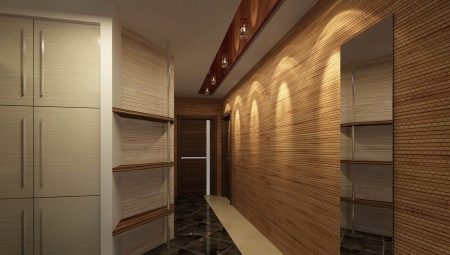
Creating a functional and beautiful interior is a meticulous and painstaking job. It is important to choose not only a beautiful material, but also strong and durable. For this, wall panels are perfect, which are made from various materials, which allows them to be used for various stylistic solutions. You will learn more about how to choose wall panels for a corridor in our article.

Advantages and disadvantages
Due to its quality characteristics and attractive appearance, wall panels remain a widely used material for a long time. They work well for corridor walls as they are easy to clean. Moreover, they make the interior of the apartment more interesting.
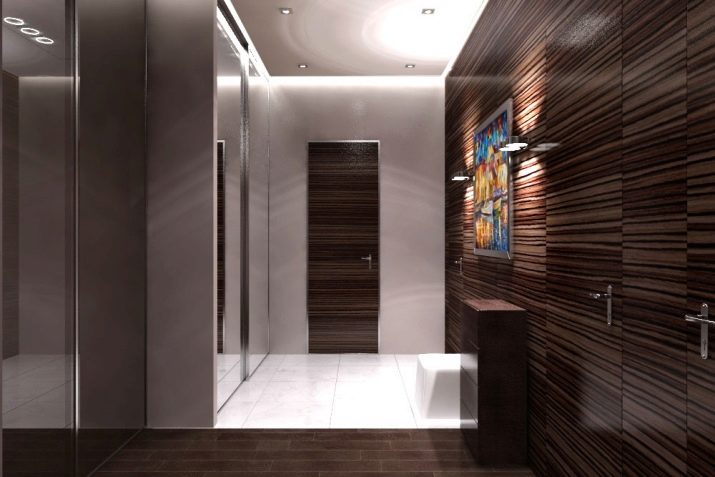
Like all existing materials, wall panels have their own advantages and disadvantages. Consider the main advantages of this material:
- it is resistant to various external influences and pollution;
- the panels are easy enough to install;
- if one of the panels deteriorates, then it is easy to replace;
- it is easy to hide the wiring behind the panels;
- they look interesting and sophisticated.


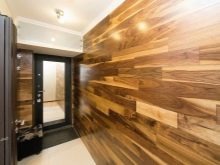
However, they have the following disadvantages:
- the panels cannot be fixed to an uneven surface, first it will be necessary to install a frame, which will reduce the area of the corridor;
- they have a fairly high price;
- not always suitable for modern styles, for example, they are difficult to use to create a high-tech interior.
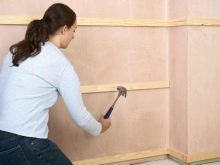

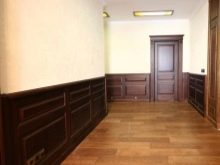
Overview of panel views
Wall panels have their own classification. There are several types of decorative panels.
- Tiled. Such models resemble tiles in their appearance.However, they differ significantly in the way they are mounted. They are installed using a tongue-and-groove system. Such panels are usually used to decorate part of the wall.
- Rack and pinion. This option is attached using the same system. In appearance, they look like lining. They do not exceed 40 cm in width, and the length can be 6 meters.
- Leafy. This type is ideal for decorating non-standard rooms. Their size ranges from 1.22 to 2.44 meters. The maximum thickness of such panels is 6 mm. Sheet options can have the texture of natural wood, stone or tile.
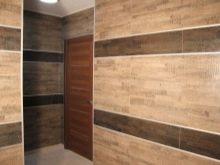
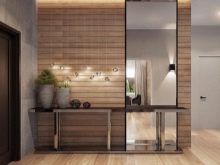

Materials (edit)
Panels are a demanded material, therefore the market is constantly replenished with new models. This also led to a wide variety of materials used.
- MDF. This material is characterized by a high level of thermal insulation and soundproofing. Moreover, MDF is a fairly durable material, on which cracks and chips rarely appear. However, such models are afraid of high temperatures, because under its influence they expand and lose their original appearance.
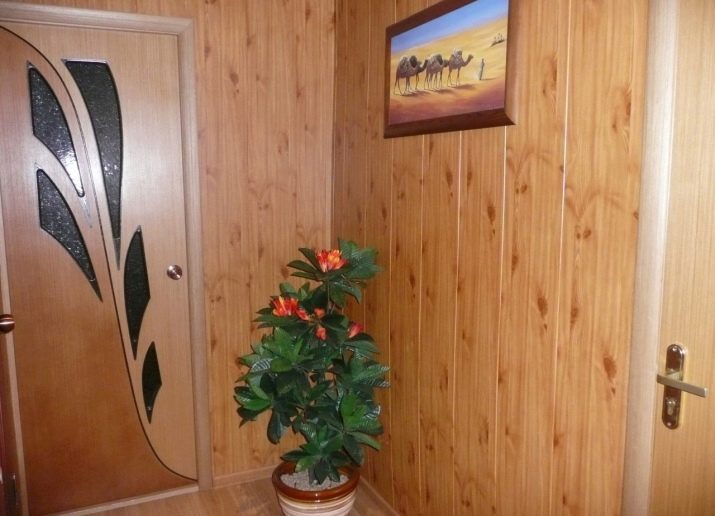
- Plastic. Plastic panels have excellent sound insulation properties. Another advantage is that they are easy to clean; a damp cloth is enough to remove any dirt. There is a wide range of design solutions. Panels can be glossy or matte. Various patterns and textures are often applied to them.


- Natural wood. This expensive material has a long service life and is durable. It does not fade, does not lose its original shine and does not deform when exposed to moisture. Wooden panels always look expensive and original, they go well with other materials. It is a natural and environmentally friendly finishing material. The most commonly used are walnut, oak or ash. There are options that are decorated with carvings or inlays.
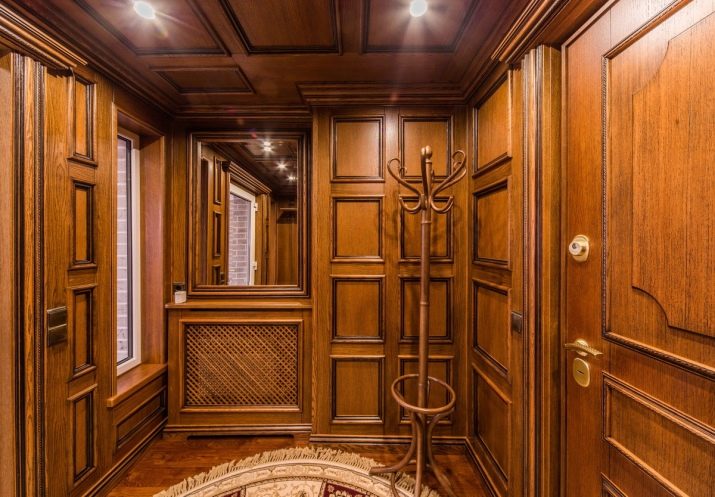
- Fiberboard, PVC and chipboard. Such options resemble natural wood in their appearance. They are distinguished by their low cost and availability. However, it is important to know that models made of fiberboard, PVC or chipboard have a short lifespan and are easily damaged or broken.
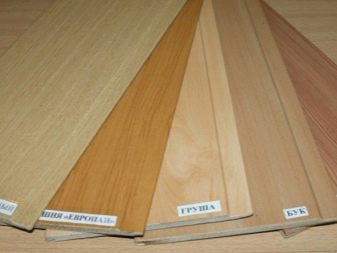

- Mirror polystyrene. Such options are covered with a thin glossy film that imitates a mirror surface. However, unlike real glass, they cannot be broken. Such panels are perfectly combined with other materials due to their appearance.
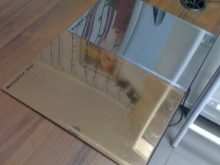
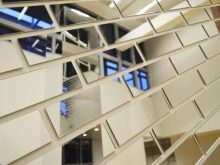
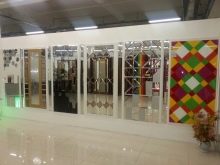
- Laminate. For finishing the floor, you can use ordinary laminate sheets. Thin sheets of class 31 are best suited. It is a relatively inexpensive material with excellent performance properties. It is resistant to damage and does not fade in the sun.

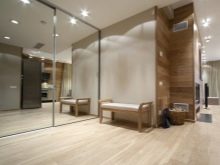
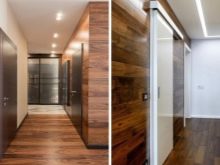
- Cork and bamboo. These soft, eco-friendly materials have a noble and rich appearance. Their special texture determines their heat and sound insulation qualities. They will not deform due to water and will not fade. Moreover, this material bends well, which makes it popular for finishing rooms with non-standard shapes.
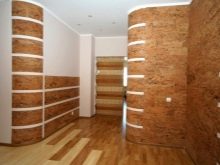
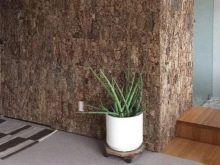
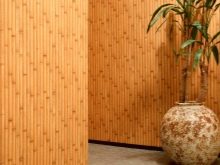
- Stone. Natural or artificial stone perfectly complements the interior of the corridor and makes it more stylish. This material is characterized by a high level of strength, resistance to damage. Moreover, it does not burn. The process of installing the stone is quite simple, since there is no need to install a special frame. These panels are attached directly to the wall. Their texture can match any natural stone or brickwork.
Artificial options are more affordable, and in terms of external characteristics they are not inferior to natural stone. Another advantage is that such panels visually expand the space.
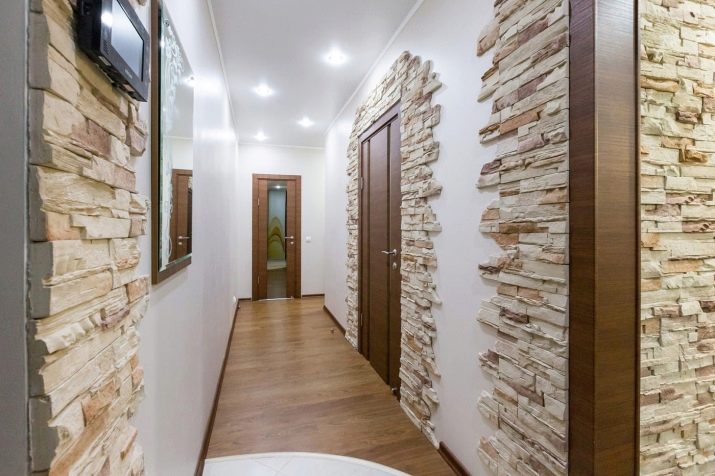
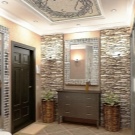
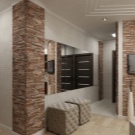
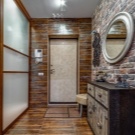
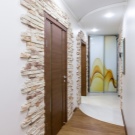

- Metal... Such options are quite rare, because they appeared on the market not so long ago. They are used to design exclusively modern styles, for example, hi-tech.They are characterized by an increased level of resistance to mechanical stress and chemical compositions. However, the process of their installation is rather complicated and expensive.
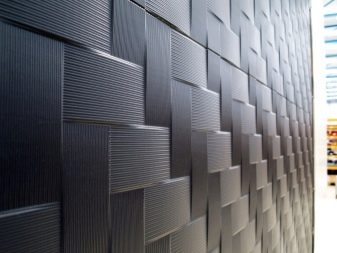
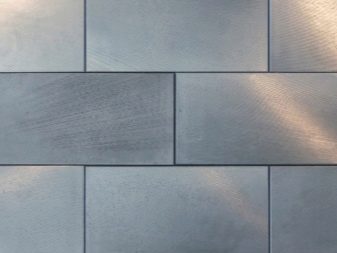
- Glass... Glass panels look bright and unconventional. It can be both glossy and matte options. Various sandblasting patterns are often applied to them. Their significant disadvantage is the need for daily careful and painstaking care, since the smallest dirt, stains and scratches are clearly visible on the surface.
In addition, these panels are very fragile and break easily, so it is better to install them in the upper half of the wall.
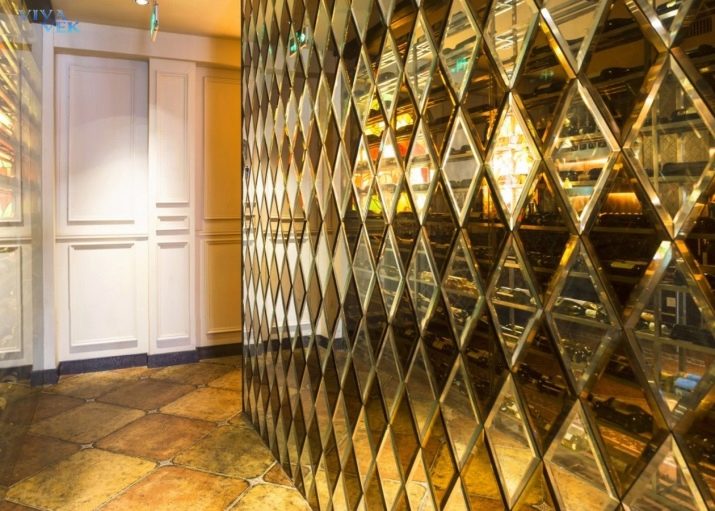
Wall design options
The panels are used to decorate interiors in various styles. Their colors and designs are varied. With their help, you can hide all the disadvantages of the room and highlight its advantages.
Light shade options ideal for dimly lit rooms... They are able to visually enlarge the space and make it warmer and brighter. Moreover, a tandem of light panels and dark flooring will look good. Interior decoration of the hallway in dark colors requires the use of panels in the same color scheme. Such a room will look sophisticated and deep.

However, such an interior requires good lighting.
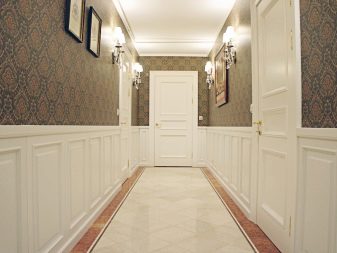

An interesting idea would be using options with small patterns or drawings. Panels in the style of minimalism or loft look very stylish. They have a simple but interesting design. But large patterns and prints are best suited for spacious hallways. They attract too much attention and will negatively affect the appearance of small rooms.
Glossy shiny and mirrored models make the space wider and more spacious. They are well suited for narrow and long rooms. Vertical slats are suitable for rooms with low ceilings, while horizontal slats are suitable for narrow rooms.
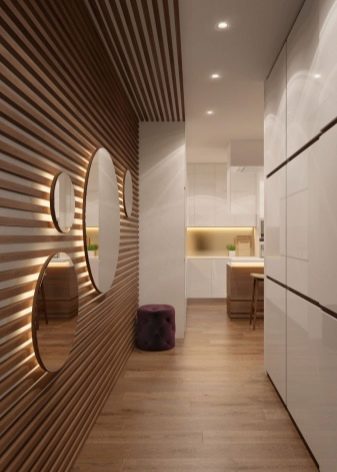
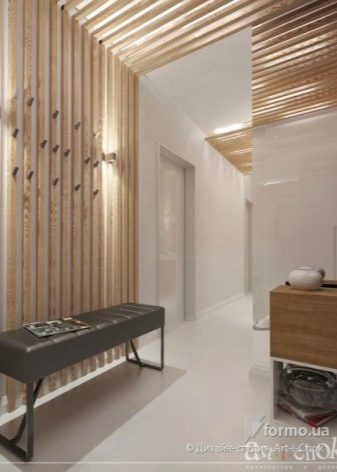
For classic style it is better to use models with an unusual design. The panels can be decorated with moldings, moldings, cornices and other decorative elements. Embossed panels will help create a striking accent in the interior.
Can be faced with walls natural stone or its imitation, such a solution will ideally complement the interior in style country, loft, provence or classic... Wood wall panels will perfectly fit into a rustic or classic interior. Wood texture looks better on darker shades. The walls, sheathed with colored glossy panels, look beautiful.
They will make the room brighter and more stylish.
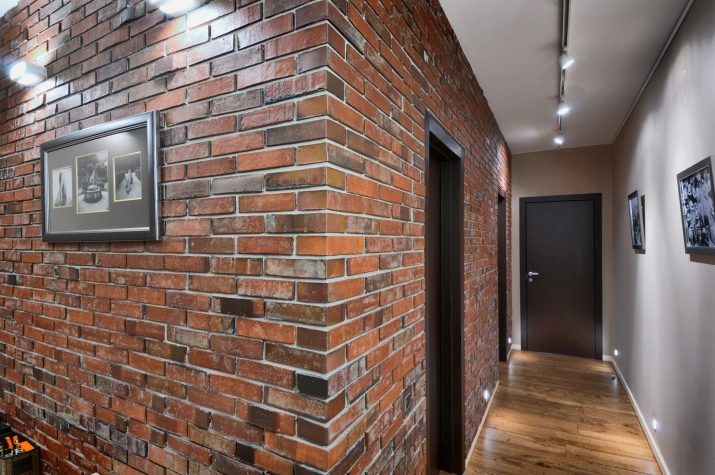
Combination with other materials
All walls can be completely trimmed with panels, but only a part can be sheathed. Most often, the lower part is sheathed with them, and the upper part is decorated with wallpaper, plaster and other materials. This combination would be a great idea for anyone with kids or pets. They often damage wall coverings and the panels are more durable.
You can divide the room into functional areas using various finishing materials. Panels are often used to decorate the space near the door. Panels made of stone or with its imitation are perfect, they go well with plaster.
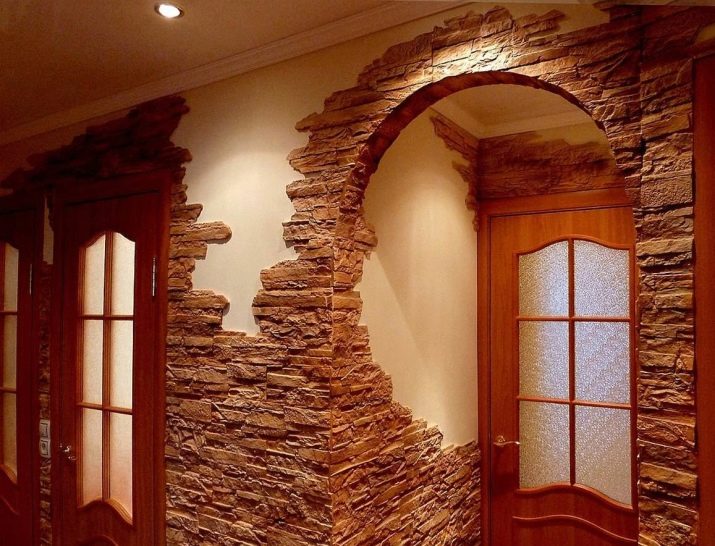
Most often the panels are combined with wallpaper. This is due to the fact that they are widely used for wall decoration. Moreover, the wallpapers have a wide color palette and design options. They are distinguished by their ease of gluing, beauty and practicality.
Plaster is no less popular option. It goes well with slabs and, thanks to its unusual texture, makes the interior more interesting. It is a strong and durable material that does not fade and does not lose its original appearance. Moreover, if you are tired or have not recovered the shade, the plaster can be painted.
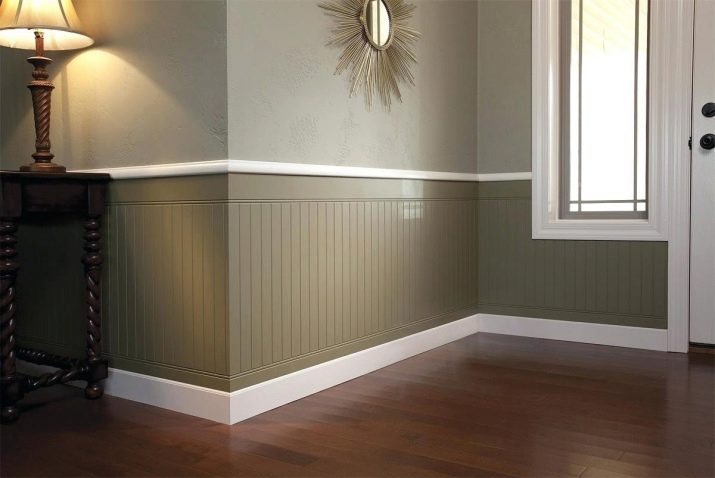
If the walls are even and have no other flaws, then they can be painted. The paint has many shades, so it is easy to combine it with other finishing materials. It looks a little boring, so it is better to use panels with an unusual and striking design. However, in the modern market, you can find unusual shiny paint, decorate the wall with a print or other decorative elements.
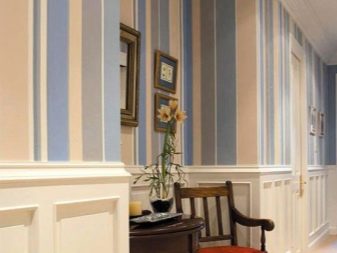
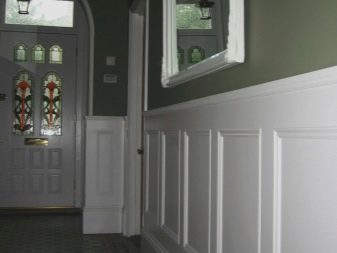
Beautiful examples
Traditionally, wall panels are used to decorate the lower part of a room. This makes the design more noble and cozy. For a Provence-style corridor, snow-white vertical models are ideal.
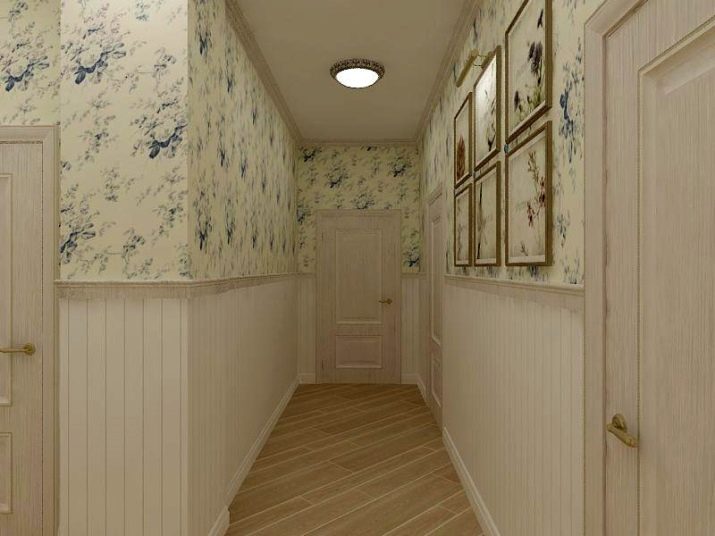
For classic interior design, an excellent solution would be to use white models with molding. And the use of wallpaper with pale patterns will create the effect of using textiles.
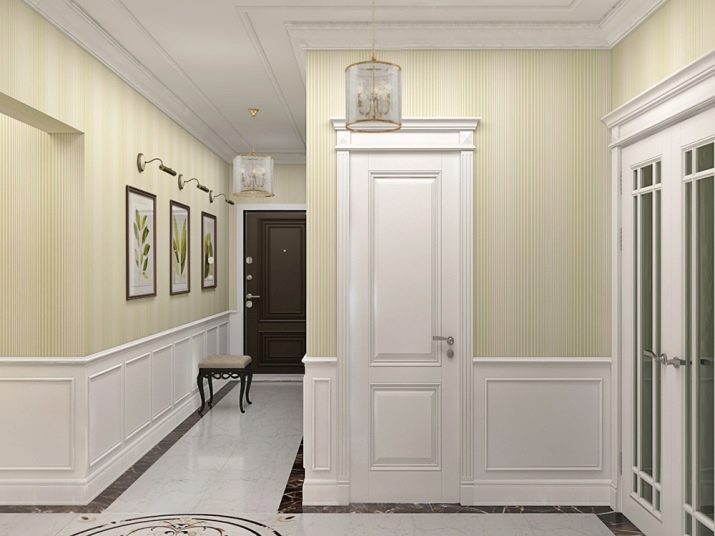
Bamboo panels with black lines look bright and stylish. They fit perfectly into the interior in a modern style.

Variants with imitation of brickwork always look interesting and stylish. Light gray models are well suited for a minimalist interior, made in gray tones.
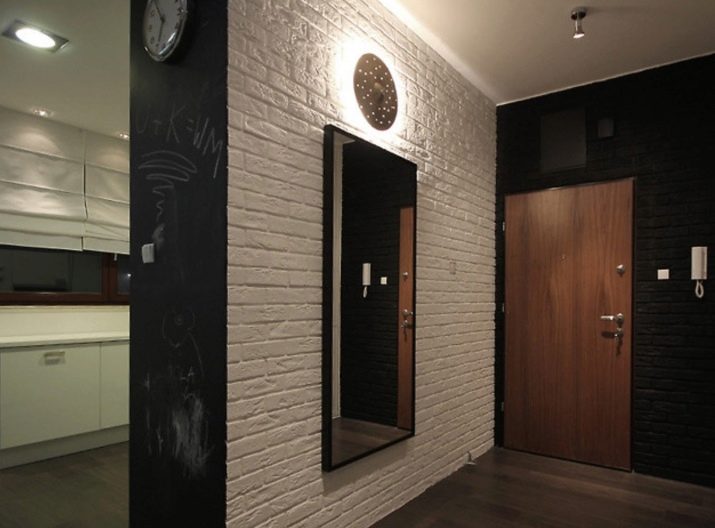
For an interior dominated by white tones, white 3D panels are an excellent solution.
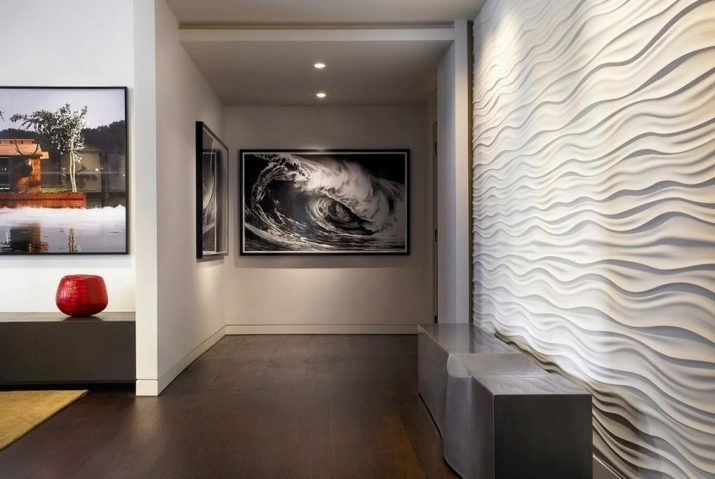
Dark wood panels are a good option for finishing designs in a classic style.

The rack and pinion vertical models look original. They go well with the quirky blue panels.
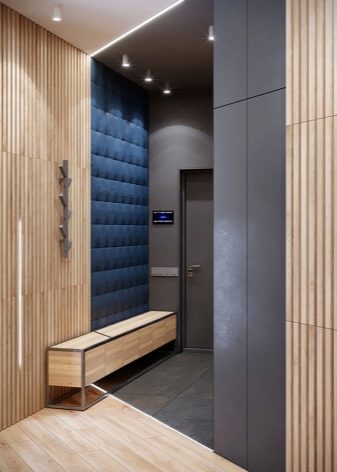

Walls completely finished with a glossy version with imitation of natural wood look beautiful.

How the laminate wall in the hallway will look like, see below.








